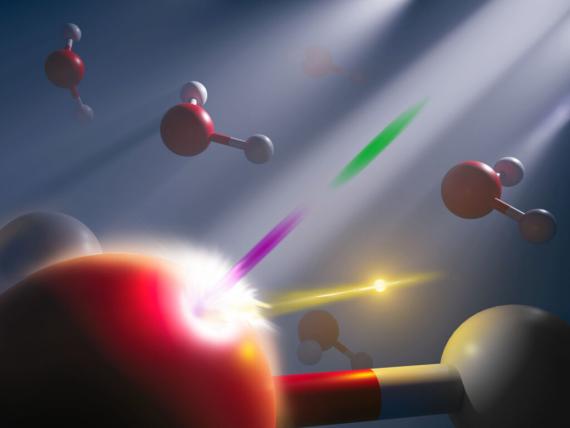Image: Scientists used a synchronized attosecond x-ray pulse pair (shown in pink and green) from an X-ray free electron laser to study the energetic response of electrons (gold) in liquid water on attosecond time scales, while the hydrogen (white) and oxygen (red) atoms are ‘frozen’ in time. Nathan Johnson/Pacific Northwest National Laboratory
In a paper published in Science on February 15, 2024, researchers report that they have isolated the energetic movement of an electron in a sample of liquid water – while “freezing” the motion of the much larger atom it orbits. The finding reveals the immediate response of an electron when hit with an X-ray, an essential step in understanding the effects of radiation exposure on objects and people. The results provide a new window into the electronic structure of molecules in the liquid phase on a timescale previously unattainable with X-rays.
Co-senior author on the paper is Dr. Xiaosong Li, the Larry R. Dalton Endowed Chair in Chemistry at the University of Washington and a laboratory fellow at the Pacific Northwest National Laboratory. Dr. Li is also UW Associate Vice Provost for Research Cyberinfrastructure and member faculty at the UW Clean Energy Institute. Co-lead author on the paper is Dr. Lixin Lu, who conducted this research as a UW doctoral student in chemistry and is now a postdoctoral researcher at Stanford University.
This research was also covered by the following media outlets:
GeekWire, February 16, 2024
EurekAlert! | AAAS, February 15, 2024
